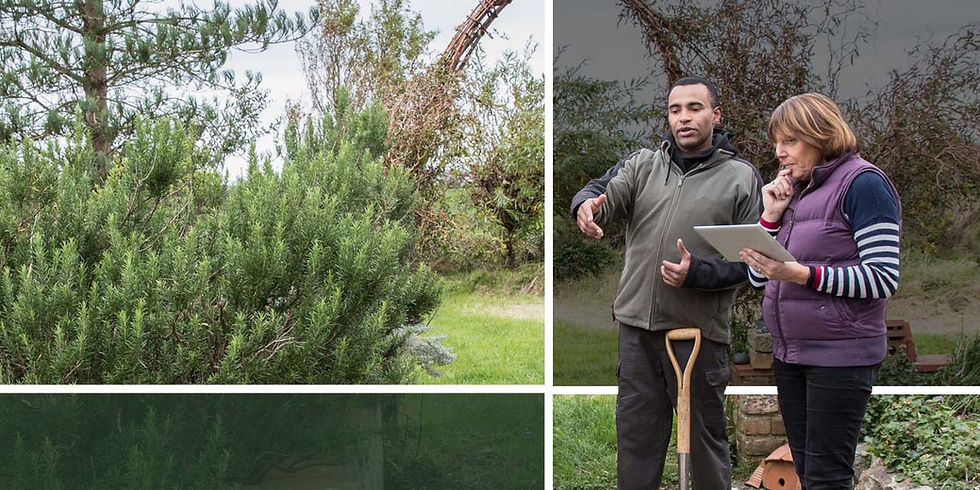How to care for spring flower bulbs after they bloom
- Rooted in Nature

- Mar 31, 2021
- 3 min read
Updated: Apr 17
If you reside in Maryland, you may have noticed that this week that some spring perennials are peeking from under the surface soil of your beds or in your yard. Flower bulbs get the gardening season off to an early start. From the first crocuses and daffodils, to the last tulips and alliums, it’s a show that can last from March through May. As spring eventually turns to summer, gardeners often wonder what to do about the spent flowers and fading foliage from these spring-blooming bulbs. To answer that question, you need to know if the bulbs will be treated as annuals or perennials.

Spring bulbs as ANNUALS:
Many spring-blooming bulbs return to bloom year after year. But not all of them behave this way. Tulips and hyacinths, for example, always look their best the first spring after planting. In future years, you typically get fewer flowers that are also smaller in size. To ensure a good show of color every spring, it’s best to plant fresh bulbs each fall.
If you are treating your spring bulbs as annuals, you should dig them up after they finish blooming. Use a garden fork to gently lift the bulbs out of the ground and then put them in your compost pile. Removing the bulbs as well as the foliage will help minimize problems with fusarium, a common fungal disease that can affect flower bulbs.
Growing spring-blooming bulbs as annuals does have some advantages. It guarantees you will always have a wonderful display of flowers. You also get the fun of putting together new color and texture combination each year.
Spring bulbs as PERENNIALS:
Early-blooming bulbs such as snowdrops, crocus, chionodoxa, scilla and daffodils will flower year after year and multiply over time. These bulbs are reliably perennial and incredibly carefree. There’s no need to deadhead, fertilize or divide them unless they become overcrowded or you want to add them to other parts of your yard.
Hyacinths will usually bloom for several years, though the size of the flowers tends to gradually decline. Muscari and alliums will also return to bloom again if the soil is well-drained and stays relatively dry during summer and winter.
Tulips may bloom for several years if the soil conditions are ideal. Like muscari and alliums, they require loose, well-drained soil that gets hot and dry in the summer and stays cold and relatively dry in the winter.
When tulips are planted in heavy soil that holds too much moisture, the bulbs have a tendency to split. If you have ever dug up a tulip bulb after it has bloomed, you may have seen this yourself. Once a tulip bulb has split into two or more sections, it no longer has enough energy to produce a full-size blossom. Some types of tulips are less prone to splitting and more likely to rebloom. These include most species tulips, Darwin hybrids, emperor tulips and some triumph tulips.
Removing spent flowers:
Smaller bulbs, such as crocus, muscari, scilla and snowdrops, multiply by seed as well as by bulb offsets. To encourage naturalizing, it’s best to leave the flowers attached so the seeds can ripen.
If you are growing tulips and trying to get them to rebloom, snip off the flowers right after they fade. With daffodils, the flowers may be removed for aesthetic reasons, but there's no other downside to leaving them on. The seed heads of alliums can be almost as attractive as the flowers, so you may want to leave them in place. Removing them doesn’t seem to affect the performance of the bulbs one way or another. Some alliums, such as "Purple Sensation" will self-sow. If you don’t want seedlings, you should remove the flower heads.
To discuss all things lawn and garden, or to schedule your Spring Clean Up, contact Rooted in Nature.



Comments